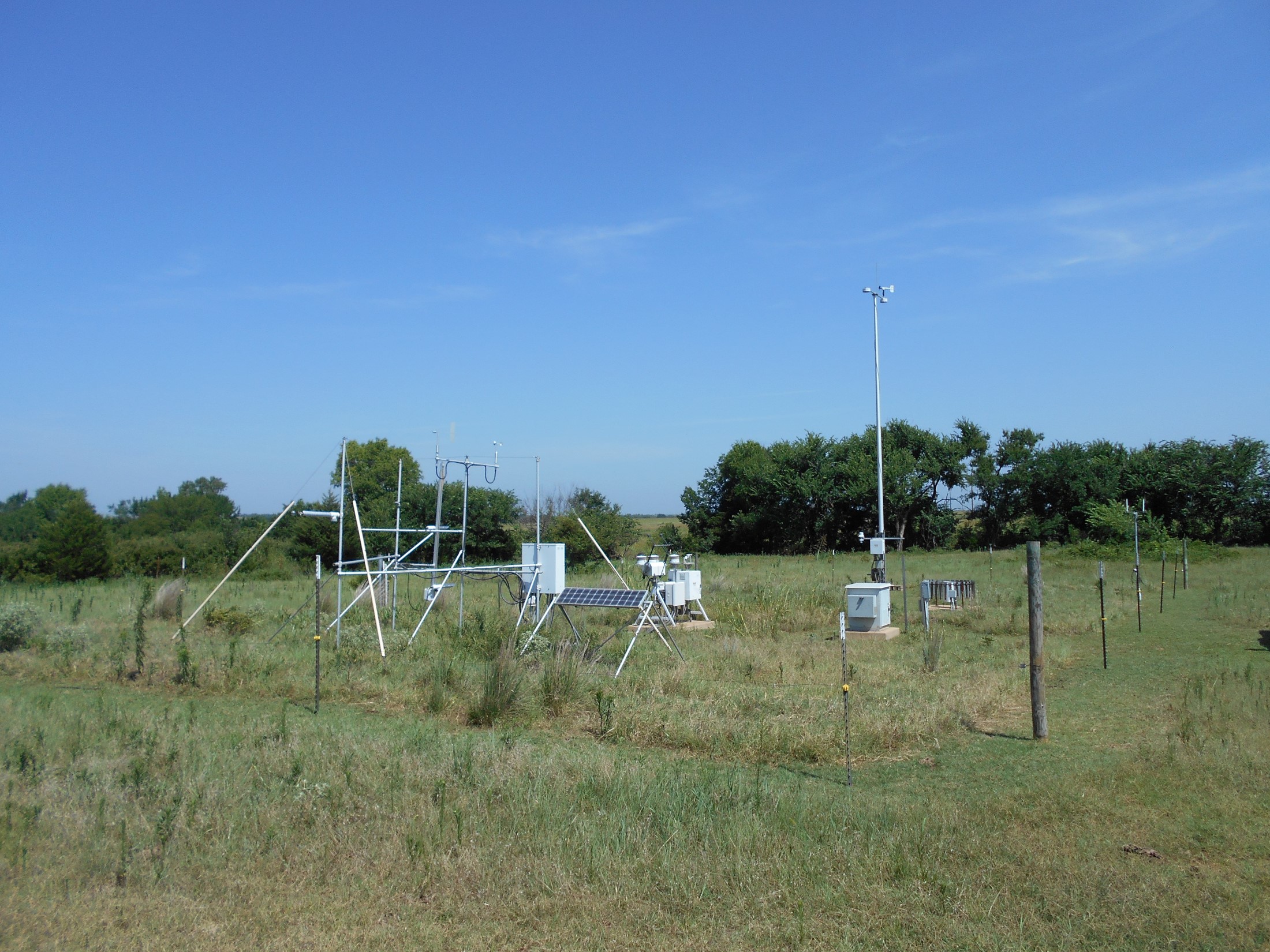Updated: Southern Great Plains Radiation Data Quality VAP Data Reprocessed
Published: 5 February 2021
Updated February 5, 2021: Reprocessed QCRAD shortwave broadband total downwelling irradiance data are now available for the Southern Great Plains sites E33 (Newkirk, Oklahoma) from August 18, 2011, to July 29, 2016, and E38 (Omega, Oklahoma) from August 23, 2011, to July 19, 2016. Best-estimate c2/s2 data and infrared-corrected c2 data are reprocessed for both sites.

The Atmospheric Radiation Measurement (ARM) user facility’s longtime recommended datastream for broadband surface irradiance measurements is Data Quality Assessment for ARM Radiation Data (QCRAD). Addressing issues in the QCRAD code, reprocessed shortwave broadband total downwelling irradiance data are now available for the following extended facilities at ARM’s Southern Great Plains atmospheric observatory:
- E9 (Ashton, Kansas) from July 16, 2014, to June 2, 2016
- E11 (Byron, Oklahoma) from July 26, 2014, to June 3, 2016
- E12 (Pawhuska, Oklahoma) from July 25, 2014, to June 1, 2016
- E15 (Ringwood, Oklahoma) from July 20, 2014, to June 7, 2016
- E21 (Okmulgee, Oklahoma) from July 10, 2014, to June 10, 2016
- E31 (Anthony, Kansas) from October 13, 2011, to June 27, 2017
- E32 (Medford, Oklahoma) from February 4, 2012, to July 26, 2016
- E34 (Maple City, Kansas) from September 2, 2011, to July 27, 2016
- E35 (Tryon, Oklahoma) from October 5, 2011, to July 20, 2016
- E36 (Marshall, Oklahoma) from September 28, 2011, to July 20, 2016
- E37 (Waukomis, Oklahoma) from September 28, 2011, to July 19, 2016
- E39 (Morrison, Oklahoma) from August 23, 2015, to July 22, 2016
- E40 (Pawnee, Oklahoma) from October 7, 2015, to July 19, 2017
- E41 (Peckham, Oklahoma) from April 13, 2016, to July 13, 2017.
The QCRAD methodology uses climatological analyses of the surface radiation measurements to define reasonable limits for testing the data for unusual values. The QCRAD value-added product (VAP) applies multiple data quality checks, corrects for errors due to infrared loss in shortwave radiometric measurements, and calculates a best-estimate total downwelling shortwave irradiance value.
For the sites and date ranges above, best-estimate and infrared-corrected global downwelling shortwave hemispheric irradiance data were reprocessed using corrected qcrad1long code. Some bugs were found in the qcrad1long code, including a Celsius to Kelvin bug and multiyear processing causing incorrect infrared correction coefficients for the unshaded pyranometer measurement of downwelling shortwave.
Scientists can use the reprocessed best-estimate c2/s2 data and infrared-corrected c2 data now. To access these data, go to the ARM Data Center. (Go here to request an account.)
More information on QCRAD is available on the VAP web page.
Read this announcement to learn about previous QCRAD releases for Southern Great Plains extended facilities.
To share your experience with QCRAD—such as how you use the data and how well they work for you—or to ask a question, contact Josh Howie.
Please note: Use E9 broadband downwelling irradiance data near the sunset horizon with caution. A nearby windmill will shade the instruments near sunset.
To cite qcrad1long.c2 datastreams, please use doi:10.5439/1227214.
Keep up with the Atmospheric Observer
Updates on ARM news, events, and opportunities delivered to your inbox
ARM User Profile
ARM welcomes users from all institutions and nations. A free ARM user account is needed to access ARM data.


















